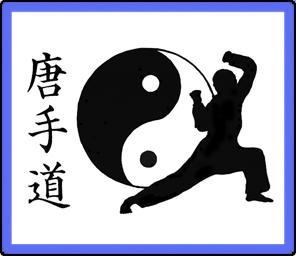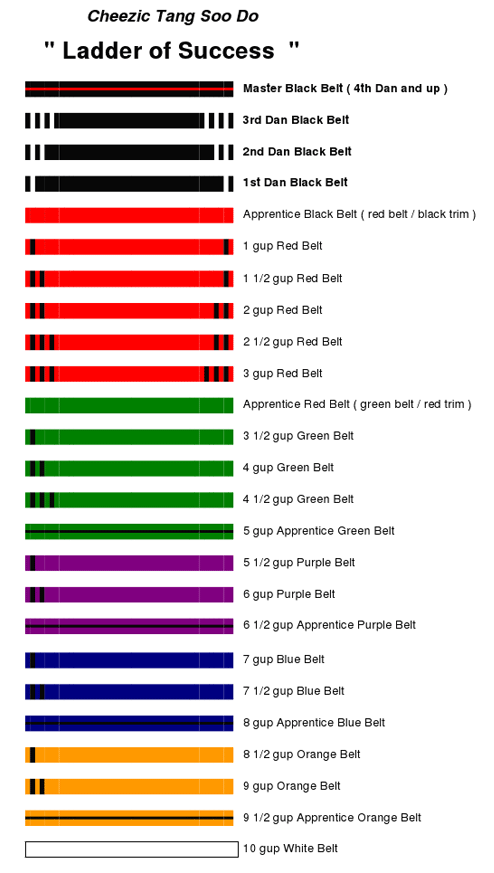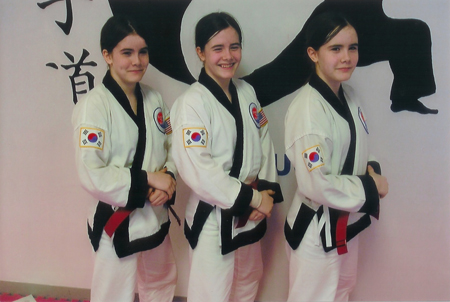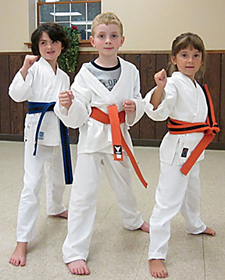
|
Contact Information Woodbury Studio: 203-266-9172 Information & Schedule Naugatuck Studio: 203-720-2147 Information & Schedule Satellite Locations and Park & Rec Programs: 203-558-4781 Locations & Schedules Email: DougWilke7@aol.com

CHEEZIC TANG SOO DO DOJANG ETTIQETTE The federation “dojang etiquette” was established to formalize acceptable attire, attitude, self-control and respect in the martial arts community. Bowing (more about bowing below...) · Bow when entering and leaving the dojang. · Bow to master belts entering or leaving the dojang. The most senior member present will bring the class to attention and initiate a formal bow-in. · Arrive 5 minutes before the class is scheduled to start. If you enter the dojang after class has started you must wait to be acknowledged and then bow in before entering the workout area. · When sitting on the floor, legs should be crossed with hands on knees. No conversation. Attire · Dobahk must be neat and clean. Kwan patch should be over the heart, American flag on left and the Korean flag on the right sleeve. · Street shoes, watches and jewelry must be removed upon entering workout area. · Your belt should be tied with a traditional knot. · Students should not face their instructor while attending to their uniform or belt. A respectful student will turn to the rear and to make adjustments. Respect for Students, Instructors and Dojang · Students will be positioned by seniority. The highest-ranking member will dress in the first row on the extreme right. Hands are behind your back while awaiting commands. · There is one lead instructor per class. Do not question or challenge the instructor during class. If you have concerns about techniques, direction, forms or other issues, speak to the instructor in private. Safety concerns are the only exception to this tradition. · The highest ranking student is responsible for the class should the instructor be absent. · New material (forms, combinations, self-defense escapes, etc.) should initially be taught to the student by the head instructor. Seek help from those who are your immediate senior in belt before approaching senior black belts for assistance. · Do not eat or chew gum in class. Students must avoid conversation once the class begins. When being addressed by an instructor or another student, all members should respond with “Yes, Sir” or “Yes, Ma’am”. · Sparring: Senior belt will dress to the right of center. When sparring, students should show consideration for their opponent’s rank, size and skill level. It would be disrespectful to humiliate another member of the association during a sparring drill. Bring all gear (uniforms, sparring gear, weapons, etc.) to all classes. · In competition ask permission to address a judge. Accept the judge’s decision as final. Be humble in victory and defeat. THE MARTIAL ARTS BOW Martial arts practice is rooted in the tradition of respect. Respect is shown for self, others, training hall, art, instructor and organization. The most commonly recognized martial arts practice representing this sentiment is the bow. To be clear, the bow is not at all about religion, but rather a question of etiquette. It is a display of humility, respect, or a sign of thanks as a greeting or a departing gesture. The practice of bowing originated in the East and was passed on to generations through martial arts and cultural tradition. Some Asian cultures use the bow as Western cultures use the handshake. The practice of bowing is one of the oldest traditional practices in the martial arts. There are several times during the regular course of martial arts practice when the bow is applied. They will vary according to the standards of the school to which you belong, but here are a few that are common: 1. Bow when entering the classroom 2. Bow when leaving the classroom 3. Bow when beginning/ending forms competition 4. Bow to opponent (with eyes up) and to referee (with eyes down) when beginning/ending sparring competition 5. Bow to Instructor (eyes down) Bowing is done by bending the waist, not by arching the back. The height level and intensity of the bow varies among martial arts styles as well. In open martial arts competition and among most Korean martial arts styles, for example, a strong, full bow is standard. This is when the student or competitor bends their body in half then returns to full standing position before proceeding. Generally speaking, the deeper the bow, the more respect is communicated. Therefore, the bow that students may present to each other will be different in intensity to the bow they present to their Instructors. The positioning of hands, feet and eyes while bowing is specific to styles and school protocol. |


